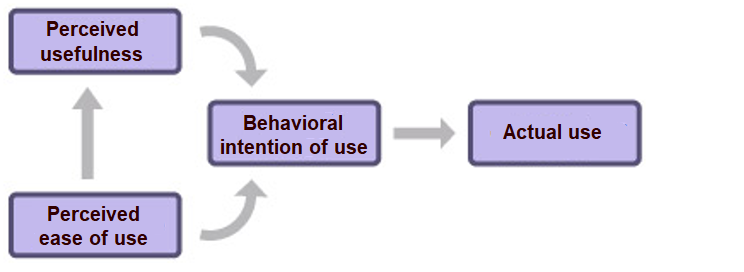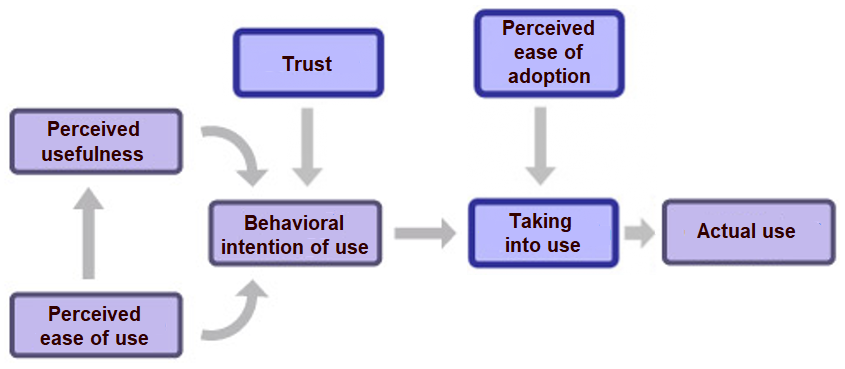
This article presents a fictional case study with “Madame Soleil” as the main character. She was a famous French astrologer during the 80s. Her last name means “sun” in English.
Or how to forecast the acceptability of a mobile service?
Contrary to what her name indicates, Germaine Soleil, was never able to predict the next day’s weather. What is more, the astrologers’ performances may have suggested to the most Cartesian among us that it is not possible to predict the future. True, but…
…if you can’t predict the future, you can forecast it. It’s a big difference. Forecasting refers to the idea of anticipating the probability of an event occurring. This does not mean that it will happen, but that it is more likely to happen. This is the kind of forecasting (not prediction) that meteorology does every day. It forecasts the weather that is most likely to occur, based on the conditions noted earlier. However, the chaotic nature of weather observations means that the most likely event does not necessarily turn out to be very probable. As a result, forecasts of future weather are sometimes disappointing.
In the same way, humans have a rather chaotic way of making their decisions and acting. That’s what makes us so unpredictable. If it were some other way, every innovation would be destined to become a commercial success. Unfortunately, far from it…
Technology Acceptance Model
Objective
Yet, in 1989, Fred Davis carried out this type of exercise to forecast the use of information systems. He created the Technology Acceptance Model (TAM). This model explains the determinants of the acceptance of computer technologies in the workplace. By acceptance, we mean the actual use behaviour of an information system (which we have already pointed out as the best indicator of user experience). The purpose of the TAM is therefore to predict the acceptance of an information system and to diagnose interface design problems before it is released. Davis will propose that users’ beliefs about the perceived usefulness and perceived usability of the system are sufficient to anticipate the adoption behaviour of an information system.
Description

Perceived usefulness is defined as an individual’s assessment that the use of an information system will improve his or her job performance. Functional consultants and product owners have a responsibility to improve the usefulness of the system.
Perceived ease of use refers to the degree to which a user expects a given system to be effortless to use. The work of ergonomists, UX & UI designers and developers will contribute to increasing the ease of use of the device.
It can be seen that while utility and perceived ease of use predict intent of use, only the latter can predict actual use. However, perceived ease of use affects utility: this means that for equal utility, a device that is easier to use will be perceived as more useful than another.
Perceived usefulness and ease of use are user beliefs about the system. However, these “beliefs” are not necessarily true… After all, it doesn’t matter what temperature the thermometer reads: only our feeling of being hot or cold matters.
However, this first model proved insufficient to predict the use of mobile services. Indeed, smartphones and the services they offer imply usage in context that goes beyond the very notion of device utility (a phone can now do more than just make calls). Moreover, the use of mobile services is not limited to the professional sphere. Therefore, in more recent developments, a number of new factors predicting actual usage have been added. It is why the TAM has become the TAMMS (Technology Acceptance Model for Mobile Services) proposed by Eija Kaasine.
Technology Acceptance Model for Mobile Services
Here is the model proposed by Eija Kaasinen in 2005.

If ease of use retains its place within the original design, utility is replaced by perceived value. The latter refers to all these parameters that will motivate the acquisition of the smartphone (price of services, relevance of the information provided in mobility, social media, geolocation, etc.). Similarly, the notion of trust, often neglected, is crucial: trust in the accuracy of information, trust in the quality of the device and services (will it always be as easy to use?), but also and above all trust in the respect of privacy and the prevention of any additional costs. Finally, as the device discovery phase is critical, it is important to create an environment that makes it easy to get started. This can be done by :
- The after-sales service,
- Factory installed applications,
- Immediate identification of functions,
- Redundancy of the help and information interface on the web,
- and so on.
In the end, this type of model can explain up to 70% of the variance in actual use (Venkatesh et al., 2003). This means that we can identify 70% of the reasons that can lead a user to choose to use a digital device!
Conclusion
In the end, what does Madame Soleil do on a rainy day? She does what everyone else does: she checks the weather on her smartphone. She does this because it’s on her, in her pocket, and it immediately gives her the weather in the place where she is geolocated on the home screen. This data transfer is reported to her, at no extra cost, and in complete transparency. This function was installed on her device before she bought it anyway, but she knew that. It was written on her operator’s site when she prepared her purchase. As a result, she prefers to consult the forecasts of meteorologists, which are more likely to come true than her own predictions.
And that we could forecast.
